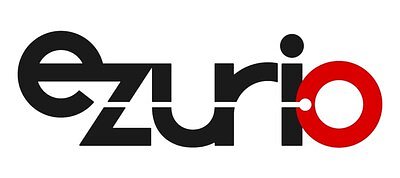
Centimeter-Accurate Bluetooth Ranging: Ezurio & onceLabs Chart New Course for Indoor Positioning
A new partnership aims to unlock the full potential of Bluetooth Channel Sounding, promising centimeter-level accuracy for secure access, navigation, and asset tracking – but real-world performance is key.
Centimeter-Accurate Bluetooth Ranging: Ezurio & onceLabs Chart New Course for Indoor Positioning
Akron, OH & San Diego, CA – November 15, 2025 – In a move to bolster the capabilities of indoor location services, wireless module specialist Ezurio has partnered with embedded software firm onceLabs to accelerate the development and deployment of Bluetooth Channel Sounding technology. While Bluetooth has long been known for proximity detection, this collaboration aims to push the boundaries of precision, potentially delivering centimeter-level accuracy for applications ranging from secure access control to intricate indoor navigation.
This isn’t merely a technology announcement; it’s a strategic alignment that highlights a growing trend in the wireless industry: the demand for increasingly accurate and reliable indoor positioning. The partnership seeks to bridge the gap between robust hardware and sophisticated software, offering a streamlined path for developers to leverage the latest Bluetooth LE capabilities.
Beyond Beacons: The Rise of Bluetooth Channel Sounding
Traditional Bluetooth beacons offer proximity-based location, typically accurate to within a few meters. While sufficient for some applications, this level of granularity falls short for scenarios demanding precision – think asset tracking in a warehouse, guiding visually impaired individuals indoors, or enabling truly immersive augmented reality experiences.
“The industry is moving beyond simple ‘here or there’ location to ‘exactly where’,” notes an industry analyst familiar with the technology. “Channel Sounding allows Bluetooth to compete with more complex and expensive systems like Ultra-Wideband (UWB) in certain use cases.”
Bluetooth Channel Sounding works by analyzing the multiple paths a signal takes from a transmitter to a receiver. By measuring the time difference of arrival of these signals, the system can pinpoint the location of the receiver with significantly improved accuracy. However, achieving this level of precision requires sophisticated signal processing and careful calibration.
Hardware & Software Convergence
Ezurio brings to the table its expertise in Nordic Semiconductor-based wireless modules, including the BL54L15, BL5340, and BL654 series, which support Channel Sounding. onceLabs contributes its deep knowledge of embedded and mobile application development, specializing in optimizing software for Bluetooth LE and other wireless protocols. Their BLE Hero app, a free mobile application, provides a readily available tool for developers to test and validate Channel Sounding implementations on commercially available hardware.
“The challenge isn’t just about having the right hardware; it’s about having the software that can unlock its full potential,” explains a software engineer with expertise in Bluetooth LE. “onceLabs’ focus on optimization and user experience is crucial for making this technology accessible to a wider range of developers.”
Accuracy in the Real World: Navigating the Challenges
While theoretically capable of centimeter-level accuracy, achieving consistent performance in real-world deployments presents significant challenges. Environmental factors like multipath interference (signals bouncing off walls and objects) and signal obstruction can degrade accuracy.
“The biggest hurdle is mitigating the effects of the environment,” says an independent testing lab technician. “In a controlled laboratory setting, we can consistently achieve centimeter-level accuracy. But in a busy office or warehouse, it’s much more difficult.”
Ezurio and onceLabs acknowledge these challenges and emphasize the importance of careful calibration and testing in real-world scenarios. They are also exploring advanced signal processing techniques to mitigate the effects of interference and improve accuracy.
Market Implications & Competitive Landscape
The partnership comes at a time of growing demand for precise indoor positioning across a variety of industries. Market research suggests a projected CAGR of 20-25% over the next five years. Key applications include:
- Secure Access Control: Enabling hands-free access to buildings and restricted areas with granular location awareness.
- Asset Tracking: Real-time location of valuable assets in warehouses, factories, and hospitals.
- Indoor Navigation: Guiding users through complex indoor environments, such as airports, shopping malls, and museums.
- Augmented Reality: Enhancing AR experiences with precise location awareness and object recognition.
The competitive landscape is crowded, with established players like Decawave (now part of Qorvo) offering UWB solutions. Apple and Google are also integrating precise indoor positioning into their ecosystems. However, Bluetooth Channel Sounding offers a compelling alternative due to its lower cost and wider availability.
“Bluetooth has a significant advantage in terms of ubiquity,” points out an industry analyst. “Most smartphones and devices already support Bluetooth LE, making it easier to deploy solutions based on this technology.”
Looking Ahead: Unlocking the Potential of Indoor Location
The partnership between Ezurio and onceLabs represents a significant step towards unlocking the full potential of indoor location services. By combining robust hardware with sophisticated software, they are paving the way for a new generation of applications that demand precise and reliable location awareness. While real-world performance remains a key challenge, the potential benefits are substantial, promising to transform the way we interact with indoor environments. The industry will be watching closely to see how this collaboration evolves and shapes the future of indoor positioning.
